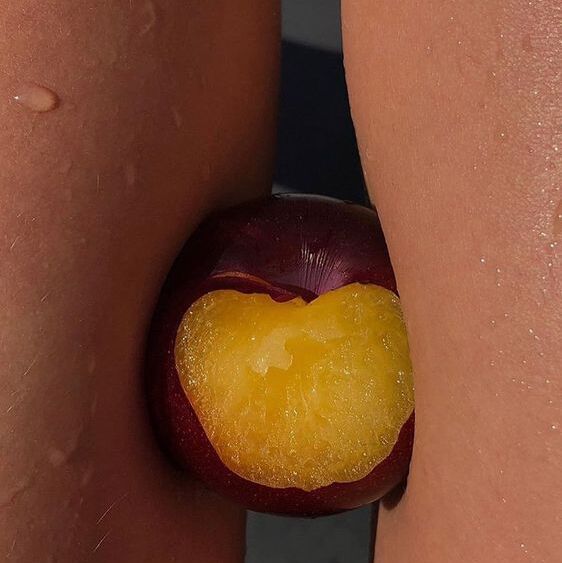
What is a Vaginal Microbiome: Why Prebiotics in Oomf?
You’ve probably heard plenty about the bacteria in your gut and how it’s the holy grail linked to overall health, but chances are you’re less acquainted with the bacteria living in your vagina, AKA your vaginal microbiome. Yes, the power does truly remain within the vagina. Microbiomes are simply the ecosystems of microorganisms—including bacteria, fungi, protozoa, yeasts, and viruses—that live on and inside different parts of our bodies. The vaginal microbiome is very dynamic, with changes in your bacterial balance occuring due to menstruation, menopause, sex and more. However, too much change in the microbiome can cause conditions such as bacterial vaginosis (BV), can increase the risk of contracting sexually transmitted infections (STIs) and other feminine health issues.
What is the Vaginal Microbiome?
Your vaginal microbiome – sometimes referred to as vaginal microbiota – is crucial to your health. It affects everything from your ability to fight off infections, to your likelihood of getting pregnant, miscarrying, and even of developing certain cancers.The vaginal microbiome is a collective term for the microbes found in the vagina. These bacteria protect you and your vagina against pathogens, which could turn into diseases or infections if the bacteria were not present.
What Bacteria Are Found In The Vagina?
In the gut, microbial diversity is typically a good thing. But in the vagina, a healthy microbiome is one that’s dominated by lactobacillus, a single genus of bacteria that creates a protective environment. The ideal vaginal microbiome is made up of at least 90% lactobacillus bacteria. You know how the vagina is self-cleaning? Well, that’s all thanks to Lactobacilli.
This is good bacteria that produces lactic acid and hydrogen peroxide that lowers the vagina’s pH level to about 3.8-4.5 (the normal vaginal pH), making it very acidic and preventing the growth of harmful pathogens like E. coli, Staph and Candida.Lactobacilli are the good bacteria responsible for fighting infections like thrush and BV, two very common vaginal infections.
What Affects the Balance of the Vaginal Microbiome?
A better question might be: what doesn’t? The general rule of thumb is that whatever you insert in your vagina* has the potential of disrupting your vaginal microbiome. Here are some of the biggest vaginal microbiome disruptors:
- Personal hygiene products Vaginal washes, deodorants and douches tend to make the vaginal environment more alkaline, allowing bad bacteria to take over. Excessive washing also flushes away healthy bacteria, making it easier for harmful pathogens to colonise. It's important to understand that a “clean” vagina just means well-populated with good bacteria.
* Avoid Vaginal Steaming. Your vagina likes staying at body temperature (37ºC), and anything warmer creates the perfect breeding environment for bad bacteria and yeasts to take over.
- Antibiotics While antibiotics kill bad bacteria within the body, it can also destroy good bacteria, such as lactobacilli. This lowers your protection against infection. Unfortunately, it is possible to get a yeast infection as a result of BV treatment, as the treatment will include antibiotics.
- Intercourse Having unprotected sex can impact your vaginal microbiome and throw your vaginal pH balance off. Not only can your partner pass on a number of pathogens to your vagina through sexual contact or intercourse, the presence of semen in the vagina can be enough to cause an imbalance. Semen is naturally alkaline, which protects the sperm from the acidity of the vaginal environment, resulting in a lacking vaginal pH balance.
- Tampons Tampons can provide a breeding ground for bad bacteria, as they can be hidden away from your body's immune system and the resident good bacteria. This is why you shouldn’t wear the same tampon for more than 8 hours, and why it's important that tampons are not made from materials that might promote growth or harbour bacteria.
- Sex Toys Sex toys that have not been properly cleaned, have been cleaned using fragranced detergents, or have been used by someone else, can cause a disruption to your vaginal microbiome.
- Hormones Oestrogen helps to maintain a good amount of lactobacilli within the vagina and pH balance for women. Women undergoing puberty, or who are pregnant, have high amounts of oestrogen in their bodies, which means that they are less likely to experience vaginal dysbiosis. Conversely, women going through menopause will see their oestrogen levels drop; therefore dysbiosis is more likely. Oestrogen levels can also drop after ovulation during the menstrual cycle, causing some women to experience yeast infections more regularly.
How To Maintain A Balanced Vaginal Microbiome
Although causes of vaginal dysbiosis such as hormone fluctuations are difficult to control, there are steps you can take to help maintain a balanced microbiome, especially if you suffer regularly with conditions like BV. For example, using a condom during penetrative sex will prevent your vagina from coming into contact with pH-disrupting bacteria or semen from your partner, and avoiding douching will be to your benefit since your vagina is self-cleaning by producing cervical fluid full of immune cells.
A big way of maintaining and protecting the lactobacilli already present is not only avoiding the use of things such as scented lubricants, but using pH balanced and prebiotic enriched lubricants like Oomf. The organic hemp extract and prebiotic enriched formula, will help maintain the healthy microflora and keep any infections at bay. These prebiotic strains help maintain vaginal balance by sticking to vaginal surfaces and making it more challenging for harmful bacteria to grow.

